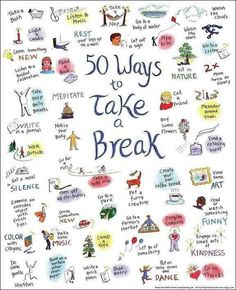
Understanding how to read nutrition labels is essential before you begin your nutrition plan. You might have heard about the Choose My Plate program. It has helped millions of people find the right mix of food groups. Many of us struggle to find balanced meals. Here are some tips to help you make your meals more balanced and healthier. Follow this guide to eat the healthy foods you need to feel great.
Most nutrition planners adhere to the same theoretical principles, but the approaches that they use to achieve their goals differ. While some planners place emphasis on macroeconomics while others prefer micro-economics. Some planners focus on a particular sector, such as agriculture. A third group is more concerned with organizational factors, and employs quantitative analytical methods. Other approaches are more intuitive and use a combination of all three. A fourth group is focused on organizational factors. It doesn’t matter which approach is chosen, it’s important to know the differences among these two groups as well as how they differ.

Whether you're interested in improving your nutrition or preventing chronic lifestyle diseases, meal planning can help you meet your goals while enjoying the process. Meal planning makes it easy to enjoy a variety and increases your intake of fruits, vegetables, and other foods. This process can be fun, no matter what your goals are, and it will help you get the right nutrients. You have come to the right spot if your search for a nutrition plan. Below are a few suggestions to help get you started.
Planned meals can help you save time as well as money. Meal planning eliminates the need to rush to the supermarket last-minute. You can also use it to manage your finances and portion sizes. It can also reduce your likelihood of overeating. The key to success is to be consistent. It will take practice, but it is worthwhile. It'll pay off in the long run.
Meal planning is an important component of a weight loss program. This can help you eat healthier and limit your unhealthy food choices. It can also help to lose weight and preserve your health. A plan can help you stay on the right track to your goals. Once you know what to eat and when, you can then make better decisions. A nutrition plan will help you eat healthier and prevent unhealthy food choices.

Meal preparation can be a great way of eating healthy and sticking to your weight-loss program. If you take the time to prepare your meals in advance, you will be able save valuable time. You can also avoid snacking on unhealthy foods when hungry. This will help you stick to your diet and prevent unhealthy eating habits. A balanced diet can help you achieve your weight-loss goal! It will also help you avoid eating foods high in saturated fats and other unhealthy ingredients.
FAQ
What should I eat?
Consume lots of fruits, vegetables. These fruits and vegetables are high in vitamins, minerals, which can help you keep your immune systems strong. Also, fruits and vegetables are rich in fiber. This makes them filling as well as helping with digestion. At least five servings of fruits and vegetables should be consumed each day.
You should also drink lots of water. Water flushes out toxins and helps you feel full between meals. Drink about eight glasses each day.
Whole grains are better than refined ones. Whole grains are rich in nutrients such as iron, zinc and magnesium. Refined grains have been stripped of some of their nutrition.
Avoid sugary beverages. Sugary drinks are high in empty calories and can lead to obesity. Instead, you can opt for water or milk, as well as unsweetened herbal teas.
Avoid fast food. Fast food has little nutritional value. Fast food may be delicious, but it will not give you the energy that you need to perform your tasks properly. Instead, stick to healthier options such salads and soups as well sandwiches and pasta.
Limit your alcohol consumption. Alcohol can lead to poor nutrition and empty calories. Limit your intake of alcohol to two drinks per week.
Try to cut down on red meat. Red meats have high levels of cholesterol and saturated fat. Lean cuts of beef or pork, lamb and chicken, as well as fish, are better choices.
How do you get enough vitamins?
You can get most of the daily nutrients you need through your diet. Supplements are available if you are deficient. A multivitamin can contain all the vitamins that you need. Or you can buy individual vitamins from your local drugstore.
Talk to your doctor about the best foods for vitamins if you're concerned about not getting enough nutrients. Some examples of rich sources of vitamins E and K include dark green leafy vegetables, such as spinach.
Ask your doctor for advice if you are unsure how much vitamin to take. Based on your medical history and your current health, your doctor can recommend the correct dosage.
Are there 5 ways to have a healthy lifestyle?
Healthy lifestyles include eating right, exercise regularly, getting enough rest, managing stress, having fun, and eating healthy. You should avoid processed foods, sugar, or unhealthy fats. Exercise is good for your body and muscles. Sleeping enough can improve memory and concentration. Stress management reduces anxiety, depression and other symptoms. Fun is the key to keeping us healthy and happy.
How do I count calories?
You may be wondering "what is the best diet for you?" or "is counting calories necessary?" The answer is dependent on several factors like your current health status, personal goals, your lifestyle, and your preferences.
The Best Diet for me - Which One Is Right for You?
My current health status, personal goals, preferences, and overall lifestyle all play a role in choosing the right diet. There are many different diets, some good and some not so good. Some diets work better than others. What should I do? How can I make the best decision?
These are the questions that this article attempts to answer. It begins by briefly describing the various diets available today. The pros and cons of each diet are then discussed. We'll then discuss how to choose which one is best for you.
Let's look at some of the main types of diets to get started.
Diet Types
There are three main types. Low fat, high proteins, and ketogenic. Let's briefly discuss them below.
Low Fat Diets
A low fat diet is a diet that restricts the amount of fats consumed. This is accomplished by decreasing the intake of saturated fats such as butter and cream cheese. They are replaced by unsaturated fats such as avocados, olive oil, and cream cheese. If you want to lose weight fast and easily, then a low fat diet is often recommended. This kind of diet could cause problems like constipation or heartburn and indigestion. If a person doesn’t receive enough vitamins from their foods, this can lead to vitamin deficiency.
High Protein Diets
High-protein diets limit carbohydrates and favor proteins. These diets often have higher levels of protein than most other diets. These diets are meant to increase muscle mass, and burn more calories. However, they might not provide enough nutrition for those who need to eat frequently. They are also very restrictive, so they might not be appropriate for everyone.
Ketogenic Diets
Also known as keto diets, ketogenic diets are also called keto diets. They are high in fat and moderate in protein and carbs. They are commonly used by athletes and bodybuilders, as they allow them train harder and more frequently without getting tired. You must adhere to all side effects, including fatigue, headaches, nausea and headaches.
What is the difference among a virus or a bacterium and what are their differences?
A virus is an organism microscopic that can't reproduce outside its host cells. A bacterium can be described as a single-celled organism which reproduces by splitting in two. Viruses measure only 20 nanometers in diameter, but bacteria is up to 1 millimeter in size.
Viruses are often spread through contact of infected bodily fluids like saliva, urine or semen. Bacteria can be spread by direct contact with infected objects and surfaces.
Viruses can get into our bodies through cuts and scrapes on the skin, bites, and other injuries. They can also penetrate the skin through the eyes, nose or mouth.
Bacteria can enter our bodies through wounds, cuts, scrapes, burns, insect stings, or other breaks in our skin. They may also be introduced into our bodies through food and water as well as soil, dirt, dust, and animals.
Both bacteria and viruses cause illness. Viruses can not multiply within the host. They can only infect living cells and cause illness.
Bacteria can cause illness by multiplying in the body. They can invade other areas of the body. To kill them, we must use antibiotics.
Statistics
- WHO recommends consuming less than 5% of total energy intake for additional health benefits. (who.int)
- According to the Physical Activity Guidelines for Americans, we should strive for at least 150 minutes of moderate intensity activity each week (54Trusted Source Smoking, harmful use of drugs, and alcohol abuse can all seriously negatively affect your health. (healthline.com)
- WHO recommends reducing saturated fats to less than 10% of total energy intake; reducing trans-fats to less than 1% of total energy intake; and replacing both saturated fats and trans-fats to unsaturated fats. (who.int)
- Extra virgin olive oil may benefit heart health, as people who consume it have a lower risk for dying from heart attacks and strokes according to some evidence (57Trusted Source (healthline.com)
External Links
How To
27 Steps to a healthy life when your family eats only junk food
The most common way to eat healthy is to cook at home. But, it can be hard to make healthy meals because many people don't know how. This article will offer some suggestions on making healthier dining choices at restaurants.
-
Choose restaurants that offer healthy options.
-
Before ordering any meat dishes, order vegetables and salads.
-
Ask for sauces that aren't sweetened.
-
Avoid fried items.
-
Grilled meats are better than fried.
-
Do not order dessert unless you really need it.
-
Be sure to have something other than dinner.
-
You should eat slowly and chew well.
-
Eat water.
-
Do not skip breakfast, lunch or dinner.
-
Take fruit and vegetables along with every meal.
-
Choose milk over soda
-
Try to avoid sugary drinks.
-
Limit salt consumption in your diet.
-
Limit the amount of time you eat at fast food restaurants.
-
If temptation is too strong for you, invite someone to be your friend.
-
Your children shouldn't watch too much television.
-
Do not turn on the television while you eat.
-
Do not drink energy drinks.
-
Take frequent breaks from your job.
-
Get up early in the morning and exercise.
-
Exercise everyday.
-
Start small, and work your way up.
-
Realistic goals are important.
-
Be patient.
-
Even if you don’t feel like it, find the time to exercise.
-
Positive thinking is key.